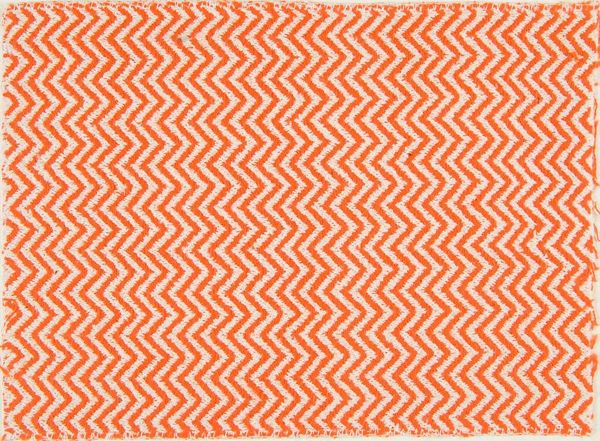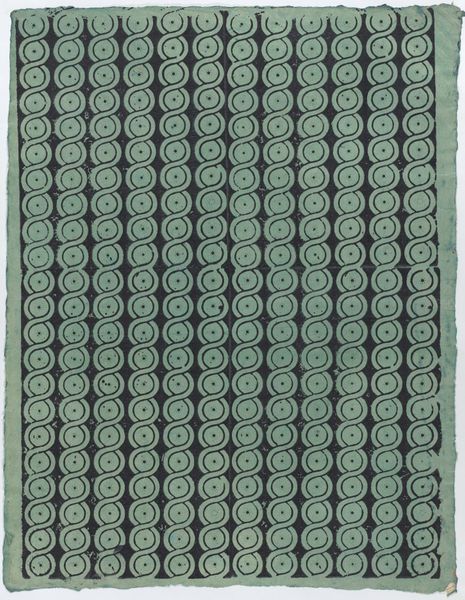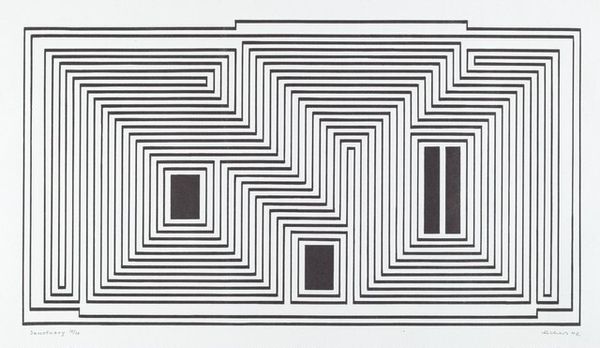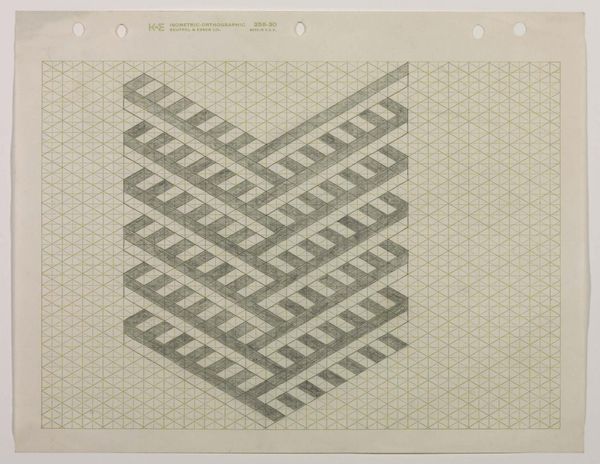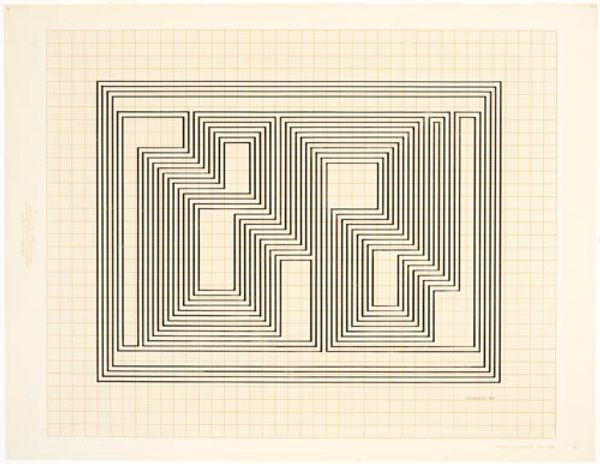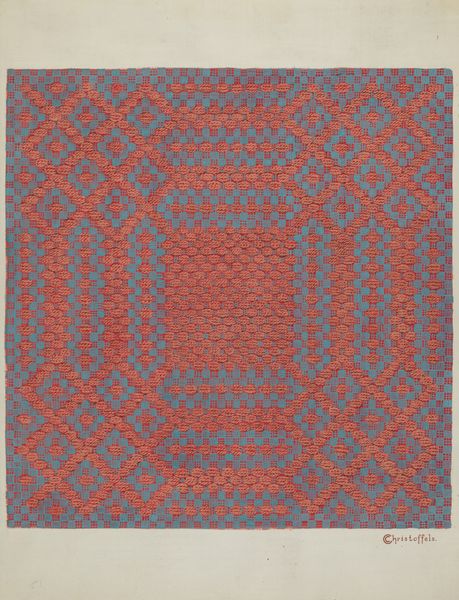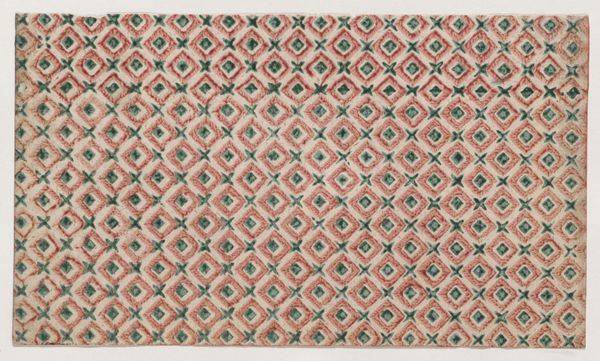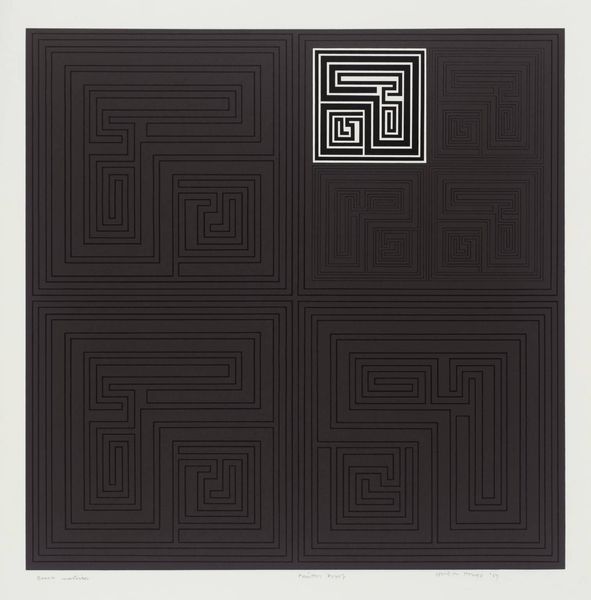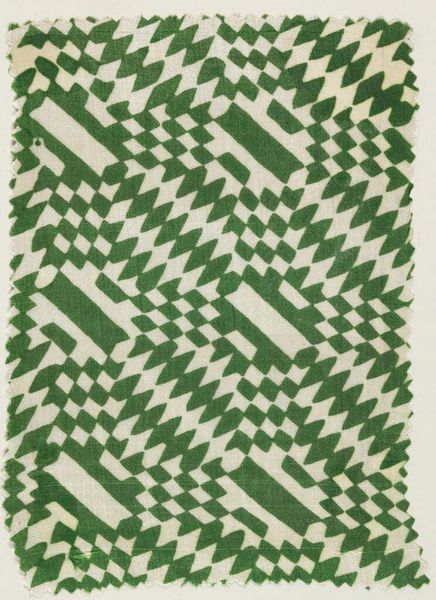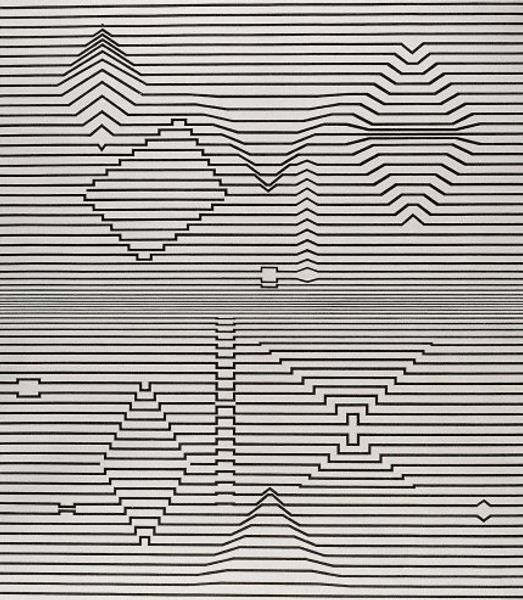
# print
#
geometric pattern
#
geometric
#
geometric-abstraction
#
line
Copyright: Tess Jaray,Fair Use
Curator: Looking at this piece, I’m struck by the meditative quality of the repetition, like a maze you could wander endlessly. Editor: Indeed. What we're viewing is "P.P.," a print crafted by Tess Jaray in 1991. Jaray was quite involved in the Pattern and Decoration movement; she often uses rigorous geometric systems to investigate illusion, perception, and space. This work, made from graphic art prints, feels emblematic of her style. It begs us to reflect on the social functions of decoration beyond the purely ornamental. Curator: Decoration as a kind of spatial poetry? I love that! The olive green against the off-white is so restful. You know, I almost feel a kinship with Agnes Martin here. Something about the quiet insistence... Editor: An intriguing comparison. This print engages ideas relating to geometric abstraction and modernism, but its connection to domestic ornamentation must be read within the Pattern and Decoration's critique of art hierarchies. The "all-over" composition can certainly be understood as a feminist gesture, a defiance against traditional notions of art's subject. Curator: Yes! It’s fascinating to think about something seemingly decorative holding such...weight, you know? This play between two and three dimensions is subtle and potent, almost hypnotic, actually. It reminds me of textile design, wallpapers, and domestic architectures, things that were once associated with female work, now brought to the foreground as "high art". Editor: Exactly. It pushes back on those prescribed gender roles and the art world's obsession with novelty for novelty's sake. When read against the backdrop of movements promoting equal access in art, Jaray's "P.P." serves as a silent protest, suggesting new, democratic definitions of aesthetic value. Curator: Thinking about value… it’s about challenging the norms we’re so used to. Art doesn’t always need to shout, does it? Sometimes, the quietest voices have the most to say. Editor: Agreed. Works like this give us an entry point to examining the politics embedded in what we perceive as beautiful or meaningless.
Comments
No comments
Be the first to comment and join the conversation on the ultimate creative platform.
